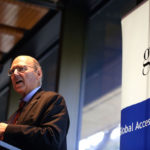Selling to the Chinese: leveraging the “One Child Policy” effect

Firstly, education. With only one child in the family, Chinese parents spend everything on that child’s education, sometimes paying for their study in Australia beyond their income capacity. Even over a decade ago many Chinese families could afford to send their child overseas, with no need to worry about funding a sibling. International education is already one of Australia’s top two services exports and continues to grow.
Property markets are also affected by the “one child policy”. At many auctions in Sydney, an Australian couple are often bidding against an extended Chinese family. The Chinese family has a lifetime of savings and probably more than two properties in Beijing and Shanghai. (An ordinary 3-bedroom unit in Beijing could cost over $1m AUD these days.) When two families pool their life-time wealth together to support the only child in each family, the “one-child policy” effect doubles. For those families in good financial position, they probably have a surplus even after buying a large house in Sydney.
Then there are other industries in Australia that have experienced great development due to the “one child policy”, or the changing of it. The demand for Australian made baby formula is an obvious example of that. It’s an easy and logical boom to predict but there are other difficult and not-so-logical ones, such as the demand for donkeys. Donkeys have become very popular in China this year. In 1990, the number of donkeys in China was 11 million; today it has almost halved to 6 million. As there is not enough, the Chinese have turned to Africa and Australia for importation.
The demand is because donkey skin is used as the raw material of an expensive Chinese medicine called e jiao (阿胶), now selling for over $500 per kilogram. The function of this medicine is predominately to regulate a woman’s menstrual cycle which is an important step to help Chinese women prepare for pregnancy. In the past, a Chinese woman only needed to plan for pregnancy once in her life. Now, she is likely to do it twice. This has (more than) doubled the demand of donkey skins and this medicine.
I was a bit surprised when I heard the logic behind the rise of donkey skin, but after thinking about it carefully it actually made sense, although I never would have predicted it as an outcome of the “one child policy” change in China. In the next decade, the world will see more and more changes occurring in China. Any of these changes could turn into a significant opportunity for an Australian business to pursue.
Barry Li is the author of The New Chinese: How they are changing Australia (Wiley $29.95), which provides a guide on the history, culture, and mindset of Chinese migrants in Australia, and of the new China. For more information visit www.theNewChinese.com
Author Barry Li was born in China a few years after the end of the Cultural Revolution, living there for 22 years before deciding to complete his higher education studies in Australia. After graduation and a few years’ work in Australia, in 2010 he returned with his wife, Zhen, to China, to find a country transformed by an economic boom that showed no sign of slowing. Finding no place for themselves in the new China, the following year they returned to Australia to create a permanent home in Sydney. Barry has a BA in Economics from the University of International Business and Economics (UIBE), Beijing, and a Master of Commerce degree from Macquarie University in Australia. He is currently pursuing further studies at the University of New South Wales. Besides being a Certified Practising Accountant and auditor, he is a long-term volunteer for CPA Australia and currently chairs the CPA NSW Young Professionals Committee.










